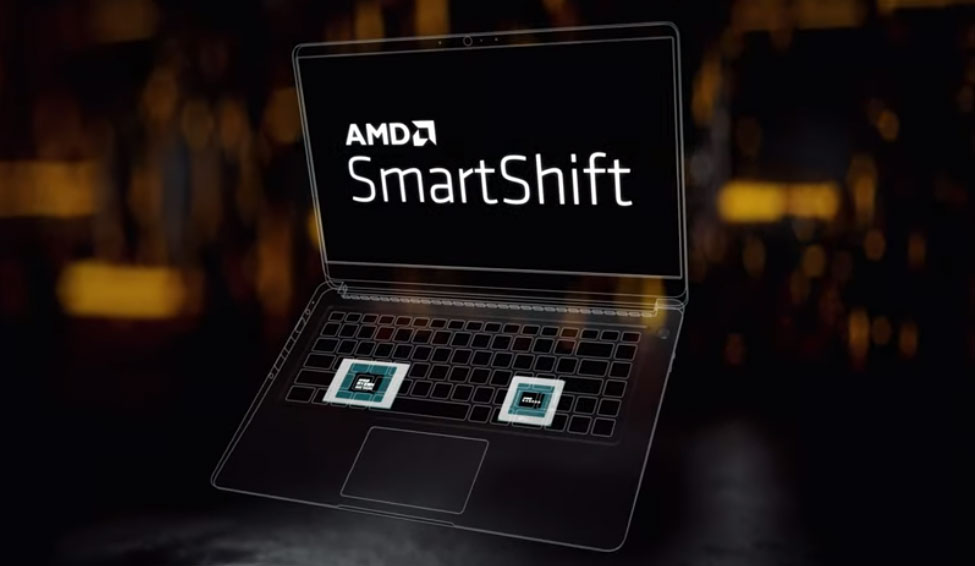AMD's gaming laptops have a feature that can boost fps, but only Dell offers it
More laptops with AMD's clever SmartShift technology are coming, though not until next year.

By bringing its Zen 2 architecture over to mobile (Ryzen 4000 series), AMD is poised to carve out a larger chunk of the gaming laptop market at Intel's expense. And as it turns out, not only are AMD's new mobile CPUs themselves compelling, so is an accompanying technology called SmartShift, which effectively boosts framerates while gaming. The caveat is that only Dell is using the feature for the time being.
SmartShift works by dynamically shifting the power consumption of the CPU and GPU, depending on the task at hand. If you are playing a game, SmartShift diverts some power from the CPU over to the GPU. According to AMD, this can result in up to 14 percent extra performance in games. It can also benefit things like video editing, 3D rendering, content creation, and productivity chores.
It really works, too. In his review of Dell's G5 15 SE gaming laptop with a Ryzen 7 4800H CPU and Radeon RX 5600M GPU, Jorge noted that the availability of SmartShift made it "on par with more expensive systems with an RTX 2060," though with more conservative gains than what AMD promotes.
In a sense, SmartShift falls into the category of working smarter, not harder, so why aren't more laptop makers using it? As spotted by our friends at Anandtech, AMD's Frank Azor (formerly of Alienware) fielded that very question on Twitter.
It's a brand new technology and to @dell credit they jumped on it first. I explained reasons why during my interview with @pcworld @Gordonung @BradChacos No more SmartShift laptops are coming this year but the team is working hard on having more options ASAP for 2021.June 4, 2020
According to Azor, Dell pounced before any other OEMs. There is some lead time involved in implementing something like SmartShift, and AMD was able to get Dell to buy into the concept early on, even though Dell has historically favored Intel hardware. As a result, the G5 15 SE is the only SmartShift option in town, and will be for the remainder of 2020.
Azor also notes that AMD is "working hard" on getting other OEMs to follow suit for 2021. In the meantime, consumers who have their eyes set on a non-SmartShift laptop like the Asus TUF A15, which offers a stellar bang-for-buck proposition, have to decide if it might be worth waiting.
It should be noted that Nvidia recently announced a similar feature for its own mobile GeForce RTX GPUs, called Max-Q Dynamic Boost.
Keep up to date with the most important stories and the best deals, as picked by the PC Gamer team.
"Our Max-Q Dynamic Boost technology automatically enables real-time GPU and CPU power balancing, allowing the system to dynamically shift up to 15W of power from the CPU to the GPU during GPU-bound workloads, like gaming. It intelligently assesses the power demand of the system on a frame by frame basis, so the power shift only happens when it’s needed," Nvidia explains.
According to Nvidia, this offers a "free" performance bump in gaming of up to 10 percent on supported models. The advantage of Nvidia's implementation is that it can work with both Intel and AMD CPUs, whereas SmartShift only works with AMD's Ryzen 4000 series.
We have not tested any laptops with Dynamic Boost, but suspect the performance gains will be similar to what we saw on the Dell system (not quite what is promised under ideal conditions, but pretty good).
Paul has been playing PC games and raking his knuckles on computer hardware since the Commodore 64. He does not have any tattoos, but thinks it would be cool to get one that reads LOAD"*",8,1. In his off time, he rides motorcycles and wrestles alligators (only one of those is true).


